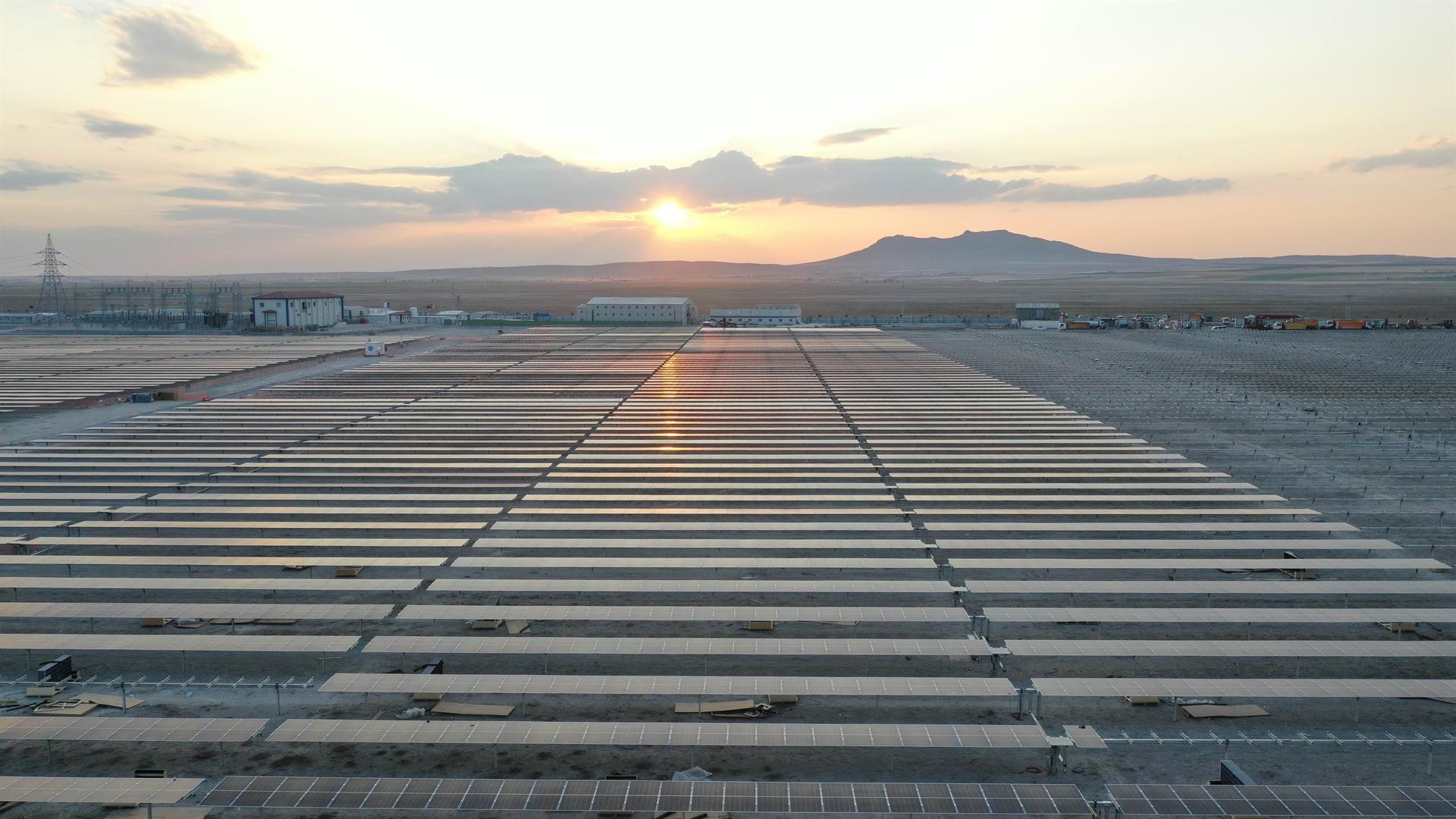Turkey’s giant solar field commences power generation
KONYA

The Karapınar Solar Energy Plant, being built on a 20-million-square-meter land in the Central Anatolian province of Konya, has started generating power nearly three years ahead of its completion, according to a company official.
“We will complete the construction of this facility in 32 months. Solar panels with a capacity of 1,300 megawatts will be established. The works will be completed by May or June 2023. We will generate 2.6 million kilowatt-hours [kWh] of power annually when it’s completed,” said Kalyon Holding Energy Group executive Murtaza Ata yesterday.
“We’re at the largest solar power plant built by an investor on a single parcel of land in the world. This is a sunlight valley,” Ata told Demirören News Agency.
So far, 10,200 of the planned 3.5 million solar panels have been installed in the field, according to Ata, who also said that 4 MW of power is being transferred to the national grid after Energy and Natural Resources Ministry officials gave the final approvals last weekend.
The amount of power generated will increase gradually as the construction gathers pace with the installation of 104,000 solar panels in a month, he added.
The solar panels have a domestic production rate of 75 percent.
Turkey opened its first integrated solar panel facility in Ankara’s Başkent Organized Industrial Zone in a high-profile ceremony on Aug. 19. The $400-million Solar Technologies Factory was also built by Turkish energy and construction giant Kalyon Holding. The factory, which will manufacture ingot, wafer, module and cell units with a capacity of 500 MW per year, will subtract $100 from the country’s yearly solar panel import bill.
The $1 billion Karapınar solar energy facility was constructed by Kalyon Holding in collaboration with China Electronics Technology Group Corporation (CETC).
When completed, the facility will increase solar energy’s share in energy generation 25 percent, according to the data from the energy ministry.
Turkey’s total electricity production was approximately 27,462 million kWh in July, according to the Energy Market Regulatory Authority (EPDK).
In July, Turkey produced its electricity from several sources; 25.2 percent from hydropower, 24.1 percent from natural gas, 21.9 percent from import coal, and 12.4 percent from lignite. Wind, geothermal, biomass, hard coal, asphaltite, solar power and fuel oil generated the remaining share.
(HH) Former lakebed
Karapınar solar energy facility is being constructed on a land that was a lake until recent years.
“Local people used to catch fish some 30 years ago. In the last 30 years, the evaporation rate has been recorded as three times higher than the precipitation rate as a result of climate change. Ironically, we are trying to stop climate change by building solar panels on a land of a lakebed that dried up because humanity has been using fossil fuels in incredibly high amounts,” said Ata.
Nearly 0.1 percent of Turkey’s annual energy needs will be generated in the facility in 2023, providing electricity to around 2.5 million people. It will prevent the consumption of 1.5 million tons of fossil fuels a year.
















